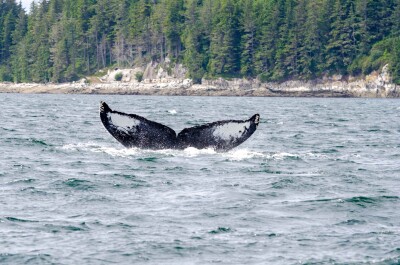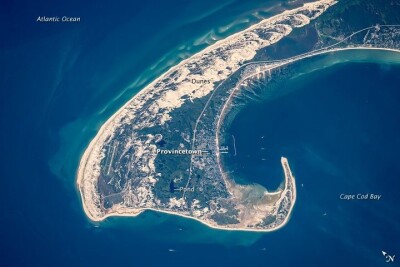Northeast
41-footer is built rugged, just in case; lobster boat has a hydraulic tailgate
In Jonesport, Maine, the Audrey Lynne, a 41 Libby, recently left the shop of Norman Libby & Sons. The 41' x 15' 6" lobster boat is for Wyatt Beal of Frenchboro, Maine.
Norman Libby says that though Beal talked about only using the Audrey Lynne for lobstering, "he did say he wanted it built rugged in case he ever does go dragging." So to stiffen up the deck, Libby bolted 4x4 pressure-treated timbers to the stringers, and then screwed the deck — 3/4-inch plywood fiberglassed on both sides — down to the 4x4s.
They installed four tanks beneath the deck for lobstering. Each tank should hold four crates of lobster. "There's usually 90 to 100 pounds in a crate," Libby says.
Beal will be running 10-trap trawls when he is fishing offshore, but whereas "most of the guys cut out the stern, he didn't want to cut it out," Libby says. "He'll have six of the traps across the stern and four go off the washboards."
Libby figures the Audrey Lynne shouldn't have any problem carrying 150 traps on deck.
In the engine compartment a 500-hp Caterpillar C9 is matched up to a ZF gear with a 2:1 reduction that turns a 28-inch square wheel with a medium cup. With that power, the Audrey Lynne hit 24.5 knots on sea trials.
About an hour to the east in Cutler, Nick Lemieux is fishing out of a new lobster boat that he, his father, Norbert, and a crew of four built over three and a half months this past winter at Norbert's shop, Little River Boat Shop.
The Phantom started out as an Osmond 47 from H&H Marine in nearby Steuben. H&H Marine delivered the hull with a molded top and the rudderpost moved back 2 1/2 feet. That was necessary because the hull was to be extended 3 1/2 feet, making her 50 feet 6 inches long.
Norbert says the extra length gave the Phantom another 2 to 3 knots. "Plus gaining [over] 3 feet on the working end is big. It's another whole row of traps."
In the process of lengthening the hull, Lemieux says they straightened the bottom and the transom. The transom required straightening because the transom's tailgate is hinged and hydraulically lowered to set traps off the stern.
Lemieux says it's the only hydraulically operated tailgate he is aware of. "I made a rough sketch and a prototype to get all my pivot points. A sixteenth of an inch off on some pivot points throws everything right out." Controls for the tailgate are forward at the hauling station.
Below the deck are five compartments for crates of lobsters. Lemieux says a sprinkler system keeps the lobsters "fresh and moist, and the water goes out of scuppers. Carrying water is a lot of weight for below-deck storage for lobsters. The goal is to keep the product fresh but not have to use an extra 50 gallons a day in fuel."
For power there's a 1,000-hp Caterpillar C18 bolted to a ZF gear with 2.5:1 reduction that turns a 37" x 42" four-blade wheel. On sea trials the Phantom hit 25 knots.
Another hull that's gained some length is the Northern Bay 38, which is being offered as a 40-footer. Only John Hutchins at Downeast Boats & Composites in Penobscot, Maine, isn't doing the work. Hutchins retired from the boatbuilding business and leased the Northern Bay 38 molds to Gary Kief of Morgan Bay Boat Co. in nearby Surry.
Stretching out the 38-foot hull to 40 feet should produce a little more speed. "Usually when you add a couple of feet you pick up a little bit," Kief says. He also figures the additional two feet should generate some sales. "It seems like the market is going for a bigger boat."
He is using Hutchins' Downeast Boats & Composites shop for laminating Northern Bay 38 and 40 hulls, and then bringing them to Morgan Bay Boat to finish off.
Though Kief is lengthening the Northern Bay hull, 38 he's sticking with what has worked well for Northern Bay hulls in the past. "We're using the same laminate schedule John did in his hulls, and full-height stringers. It's the same system, basically." — Michael Crowley
West
Yard's biggest rebuild is back in Alaska; 59-footer gets shorter and much wider
The 58-foot Cape St. Elias is back in King Cove, Alaska, after a major rebuilding job at J&H Boatworks in Astoria, Ore., followed by more work at Seattle's Snow & Co.
"Overall it was probably our largest renovation ever," says Tim Hill at J&H Boatworks. The Cape St. Elias was built in the 1950s and sank at least once. When she showed up in Astoria last September, she needed a lot of work.
The boatyard sponsoned the Cape St. Elias from 19 to 26 feet. Then a whaleback and bulbous bow were added, and a stern ramp was built into the transom, enabling her to go dragging. (The Cape St. Elias will also be seining for salmon, pot fishing for cod and crabbing.) Beneath the prop she now has a beaver tail to help keep the seine out of the wheel.
Steaming back to Alaska, the Cape St. Elias was a knot faster than before, Hill says, and "the fuel economy was really good, burning 10 gallons an hour."
On the trip north, the Cape St. Elias pulled up to Snow & Co.'s dock. "We had 18 days to do the work, and no day was much less than 12 hours. Everybody embraced the fact that they wouldn't get a day off until the boat left," says Snow & Co.'s Brett Snow.
The work list wasn't short. They had to build a galley, head and shower; three staterooms; and a tool room; as well as install a new freestanding mast — along with antennas and radars. The mast was built before the Cape St. Elias arrived.
Fiberglass and foam was removed from the two fish holds, which were refoamed and fiberglassed. The forward fish hold was expanded into the old fuel tank area.
"We never had a project where there was so much to do and so little time," Snow says. "We were still putting trim up while they were loading groceries."
At Hansen Boat Co. in Everett, Wash., Peter McCarthy brought the Stella down from Kodiak for alterations. Built in 1994 at Van Peer Boat Works in Fort Bragg, Calif., the 59' 5" x 24' Stella had to be shortened for the salmon fishery, and she needed to be widened for safety reasons.
"We wanted to stay within the 58-foot range to do salmon, but wanted to make her competitive in the pollock and cod fisheries against bigger boats. We were filling her up pretty often and wanted more safety," says McCarthy.
Just going into Kodiak harbor with a heavy northeaster blowing, McCarthy describes as "pushing our luck."
So Hansen Boat Co. shortened the Stella to 58 feet and sponsoned her out to 32 feet. The easiest way to bring the boat down to 58 feet would have been to cut back the stern deck, but McCarthy needed the deck space. Instead, the yard removed part of the bow and then rebuilt at 58 feet.
This is the first time the boatyard has sponsoned where the width-to-length ratio is more than 50 percent, says the boatyard's Rick Hansen. That along with shortening the bow created some interesting design work up forward to fair the bow in with the sponsoned section, but McCarthy describes the result, especially how the bow flares out, as "incredible." In appearance he favorably compares the look to a lot of the European trawlers he saw coming into ports in his native Ireland.
With the forward fish hold expanded, McCarthy figures the boat should pack 230,000 to 240,000 of pollock in its two holds. With a deck load she should be able to bring in 300,000 pounds.
To avoid having to remove the trawl winches when changing fisheries, winch rooms were built into the sides of the deckhouse, allowing the winches to be off the main deck.
The Stella should leave for Kodiak in August. — Michael Crowley
South
Virginia wooden boat still wins races; 88-year-old pound-net boat is restored
Spring brings out the boats as boatyards along the Ches
apeake Bay in Virginia service scores of wooden fishing boats that will be working the spring and summer blue crab, and fall and winter oyster fisheries.
Diversity is a strong element of a successful boatyard, and Keith Ruse of Deltaville Boatyard in Deltaville, Va., understands that. He services 100-foot-plus yachts and sailboats, as well as 20-foot-plus commercial fishing boats. A portion of his yard is set aside for do-it-yourself maintenance.
"I don't know what we would do without this type of service," says Carlton Haywood, a Bavon, Va., waterman who was working on his boat in May. "A lot of the yards don't want you working on your own boat, and many of us can't afford not to."
Haywood uses his boat for crab potting, oystering and gillnetting. "She was built in 1972 by Virgil Miller" of Deltaville, says Haywood. "Buddy Rowe had her built, and I bought her in 2004. I named her Sharon H. after my mother."
The 38' x 12' classic Chesapeake Bay deadrise has a 220-hp John Deere for power. Running at 18 to 19 knots, "She goes along pretty good, and she has won several races at Harborfest in Norfolk," Haywood says with pride.
Incidentally, at the 37th annual Harborfest workboat races in June, Haywood won again in the 210- to 220-hp workboat class. At the same event, Grover Lee Owens and Willard Norris were honored for their contributions to the art of building wooden boats. Owens and Norris are two of the last active boatbuilders in Deltaville, once considered Virginia's deadrise boatbuilding capitol.
Haywood was doing the annual maintenance work himself, coating the bottom with Pettit Trinidad antifouling paint and the sides and topsides with a white Rust-Oleum paint. "I used to use marine paint for my boats, but it got so expensive I went to a Rust-Oleum house paint and I give it an extra coat," he says. "It still saves me a lot of money every year."
The Sharon H. has a round stern, which was one of the reasons Haywood bought the boat. "I do a lot of gillnetting and those two sharp edges on a square stern deadrise snag nets. I've worked enough nets to know that you get a better flow across that stern when working a net on a round-stern boat."
Boatbuilder Eric Hedberg and volunteers of the Mathews Maritime Foundation had a memorable day on June 13 when the restored Peggy was launched from the foundation's boatshop on Gwynn's Island, Va.
The 55' x 12' 2" x 4' 3" Peggy was donated to the museum in 2008 and has been restored to showcase the Mathews County watermen and boatbuilders.
Harry A. Hudgins of Peary, Va., built the Peggy in 1925 as a trap boat for the Virginia pound-net fishery. The Peggy now has a new engine, all new decking and a new pilothouse.
Hedberg is also restoring a 1957 Potomac River dory using PVC planks. Hedberg was one of the first on the bay to experiment with PVC as a boatbuilding material. He says that a boat built with PVC "looks like a wood boat, acts like a wood boat and feels like a wood boat. Has that great ride of a wood boat, but it won't rot, won't absorb water, and doesn't have the shrink and swell problems that wood boats do."
Potomac River dories are fore-and-aft planked boats that were built primarily in St. Mary's County, Md., to work in the Potomac River's commercial fisheries. The forerunner to the dory was a flat-bottom sailing craft called a black "nancy."
The boats were flat bottom, but the bottom planking ran from stem to stern. Some maritime historians believe the stem-to-stern bottom planking style used by dory deadrise boatbuilders was a carry over from the early nancys. — Larry Chowning






